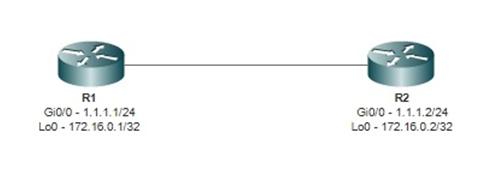This post describes how to configure a Cisco IOS Router with WebVPN. Cisco ISE (v2.1) will be used as a RADIUS server, to provide authentication and authorization. For testing purposes group membership will be used to determined which RADIUS attributes will be pushed to the connecting client.
RADIUS Server Configuration
For authorization Admin users will be permitted to use split tunnel, these configuration settings will be controlled centrally and pushed to the clients if they pass authorization.
Define Network Device
Add the Router as a Network Device, ensure to enter the shared secret password, this must match the shared secret configured on the router.




